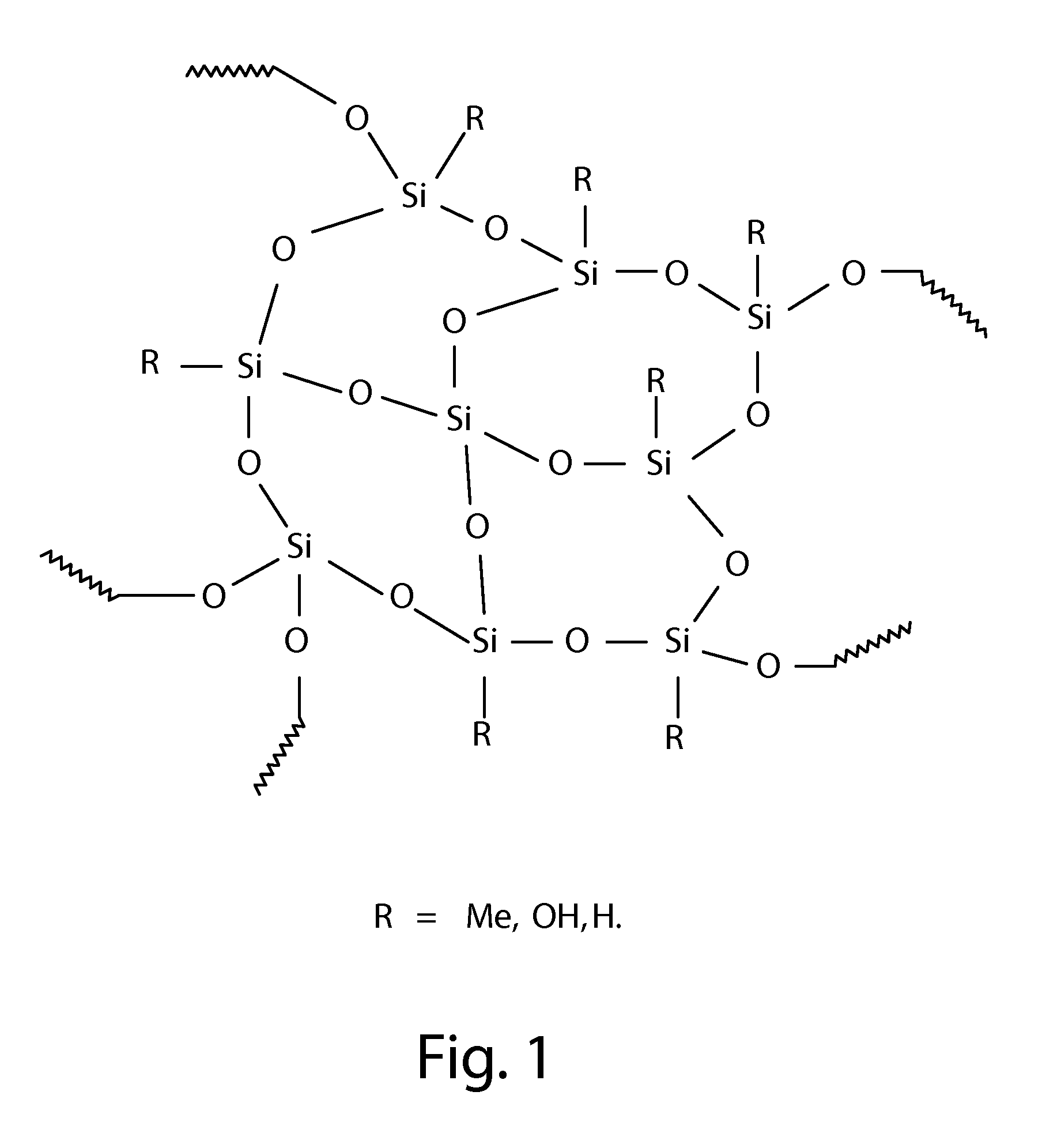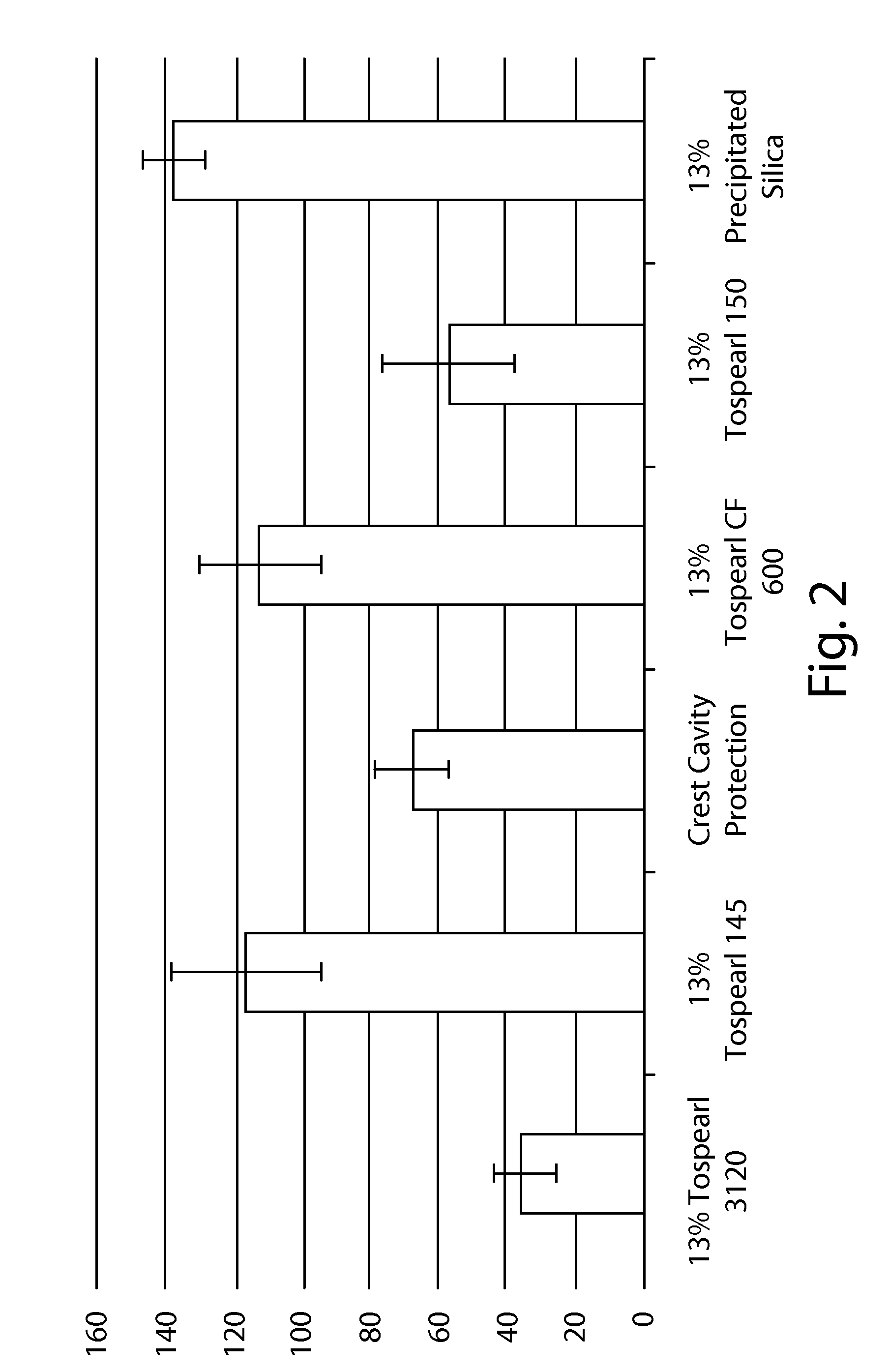Oral Compositions Containing Polymethylsilsesquioxane Particles
a technology of polymethylsilsesquioxane and composition, applied in the field of oral care compositions, can solve the problems of reducing the amount of active available in the formulation and/or the product efficacy, affecting the stability of the composition, and affecting the product quality of the product, so as to improve the stability, improve the availability of these other components, and improve the effect of composition stability
- Summary
- Abstract
- Description
- Claims
- Application Information
AI Technical Summary
Benefits of technology
Problems solved by technology
Method used
Image
Examples
examples
[0118]The following examples and descriptions further clarify embodiments within the scope of the present invention. These examples are given solely for the purpose of illustration and are not to be construed as limitations of the present invention as many variations thereof are possible without departing from the spirit and scope.
example i
[0119]Examples 1F-1K are dentifrice compositions that may be suitably prepared by conventional methods chosen by the formulator. Examples 1G through 1J illustrate dentifrice compositions containing polymethylsilsesquioxane particles (but no stannous ion source). Example 1F is a comparative example containing no abrasive. Example 1K is a comparative example containing a precipitated silica abrasive commercially available from Huber.
[0120]Table 2, below, shows the particle size of the TOSPEARL materials used, as determined by using the methodology set forth herein with a Malvern 2000 (PS-3 Hydro2000SN; Model APA 2000).
[0121]The PCR values for each formulation were determined using the methodology disclosed herein and reported below each formulation in Table 3. FIG. 2 is a graph of the PCR values for formulations 1F-1K.
[0122]As may be seen from the data below, the compositions containing polymethylsilsesquioxane particles with an average particle size of about 4.2 and smooth surface (T...
example ii
[0123]Examples 2A-2C in Table 4 are dentifrice compositions that may be suitably prepared by conventional methods chosen by the formulator. Examples 2B and 2C illustrate dentifrice compositions containing polymethylsilsesquioxane particles according to the present invention. Example 2A is a comparative example containing a precipitated silica abrasive commercially available from Huber.
[0124]The formulation stability of fluoride, stannous and zinc ions, over time was determined using the methodology set forth below and the results tabulated in Table 5. As shown below in Table 5, formulations 2B and 2C containing the polymethylsilsesquioxane particles according to the present invention exhibited improved formulation stability with both soluble fluoride and soluble stannous ions initially and after one month of storing the formulations at 40° C. versus a comparative formulation 2A containing precipitated silica, while also maintaining reasonable stability with zinc ions. (Product place...
PUM
| Property | Measurement | Unit |
|---|---|---|
| volume weighted mean particle size | aaaaa | aaaaa |
| particle sizes | aaaaa | aaaaa |
| particle sizes | aaaaa | aaaaa |
Abstract
Description
Claims
Application Information
 Login to View More
Login to View More - R&D
- Intellectual Property
- Life Sciences
- Materials
- Tech Scout
- Unparalleled Data Quality
- Higher Quality Content
- 60% Fewer Hallucinations
Browse by: Latest US Patents, China's latest patents, Technical Efficacy Thesaurus, Application Domain, Technology Topic, Popular Technical Reports.
© 2025 PatSnap. All rights reserved.Legal|Privacy policy|Modern Slavery Act Transparency Statement|Sitemap|About US| Contact US: help@patsnap.com


